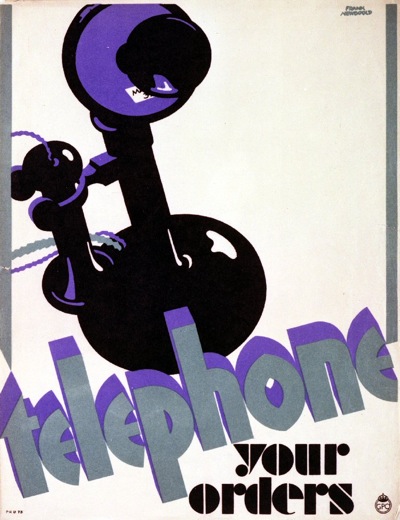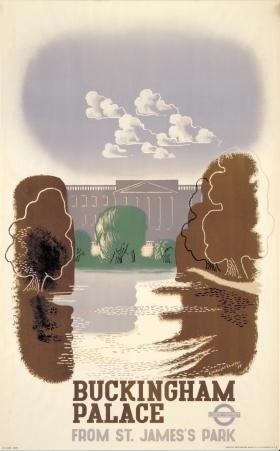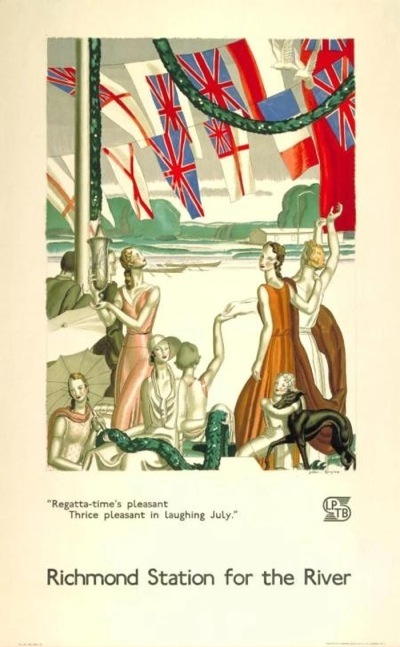Not with BBC iPlayer, there isn’t. So for those of you who managed to be out there having a life on Sunday evening, and thus are still skipping around with joy in your hearts and a twinkle in your eye, here is five minutes of television to turn your gills green with envy.
It’s the Antiques Roadshow (available there for another 4 days or so).
At about 52 minutes in, you will find a man who accidentally bought 100+ vintage travel posters for 50p as an eleven year old. Watch away, then feel free to whine and gnash your teeth along with me in the comments box. And also tell me whether or not you think the valuation is just a bit on the high side.
For those of you who are outside the UK and thus barred from the wonder that is the BBC iPlayer, here is an executive summary. Man goes to auction as 11 year old, buys nondescript roll of paper which is part of job lot, ends up with 120 or so travel and other posters. There were only 9 of his haul on show on the programme; starting with two liner posters that I’m not that fussed about, but then moving on to two Frank Newboulds for the GPO, one of which was a close relative of this one, if not identical, and neither of which I’ve ever seen before.
Then there was a McKnight Kauffer of Buckingham Palace.
And four posters by Jean Dupas, all of which look to me like book covers for Evelyn Waugh novels,
but which are, if you want to be a bit nerdy about them, noteworthy for having the very short lived LPTB logo on them (public demand soon brought back the roundel).
Interestingly, all of these posters date from 1934. Even more interestingly, if you’re the owner, the show’s expert valued them at £30,000+. (I’d quite like another opinion on that, especially these days. Or maybe she buys all her posters from Mayfair dealers.) Then that was it, and we’re back to Fiona Bruce for another lame link.
There, now it’s just like you watched the programme, isn’t it?



Hello
The Roadshow doesn’t have a poster expert. They just don’t see them often enough. I think it was Judith Miller the other day. She will have looked at her Christie’s catalogues and a few other places. They have a library van full of reference books that travels along in the caravan.
Personally, I thought the valuation was fine. I didn’t understand that he’d got 100 posters in total. I guess these were the best ones though.
The Dupas posters are odd. They appeal to the art deco collectors – so that market is international. They are worth much more than the other posters.
It was interesting that, notwithstanding his earlier enthusiasm, the collector hadn’t continued to buy things. At least it didn’t seem so.
Morphets and the Roadshow have added a lot of value.
Best
P
Just books? I thought (with my ex-tv producer head on) that they would have at least put in a call to you or Patrick Bogue. Tsk.
Interested that you think that there is added value around thanks to Morphets and so on. Do you think that pre-war posters are getting more of that than the post-war ones?
Dear Crownfolio
The Morphett’s sale certainly got a lot of press. I think the Malcolm Guest provenance also made the posters attractive to railway collectors. Generally, they like metal more. Even great posters are much less valuable than engine name-plates.
The geography of poster collecting is complex.
There are a number of separate periods
1890-1900 Belle epoque
1920-1939 Art deco
1945-1970 Mid Mod
The market seems to be organised around thematic categories – trains, boats, planes, autos, girls, advertising…
Then there are the political, propaganda, pop and film posters….
The venn diagram of how all these things overlap, or don’t, is fascinating.
I was always surprised that there was so little interest in the market for “design” posters.
When we started collecting stuff, many moons ago, the art market wasn’t really interested in posters (as evidenced by the story on the AR) and the poster people weren’t interested in art.
P